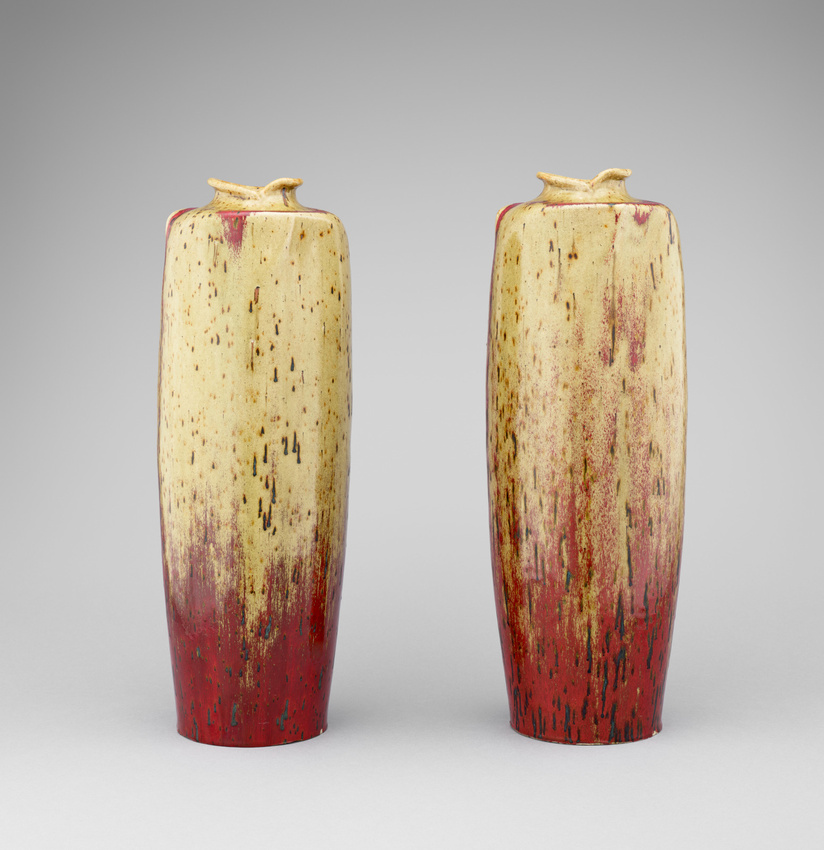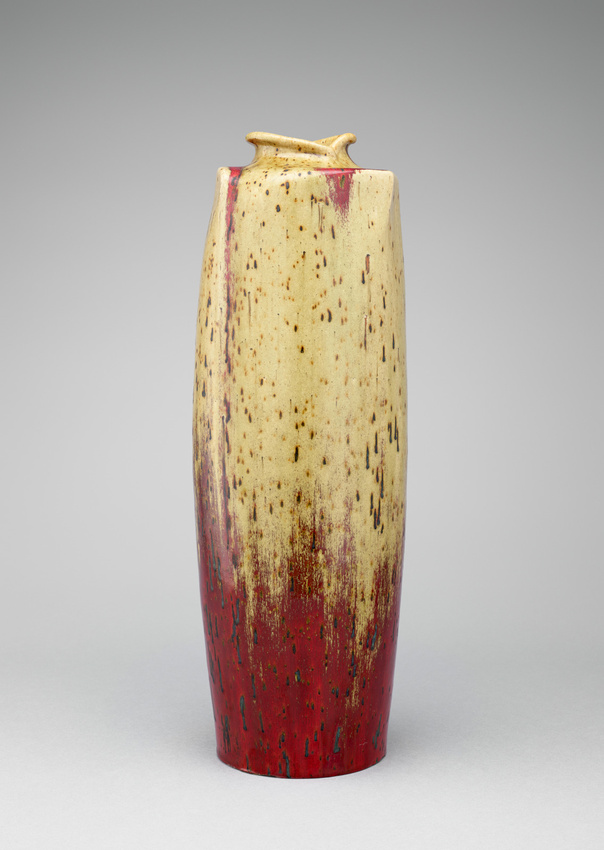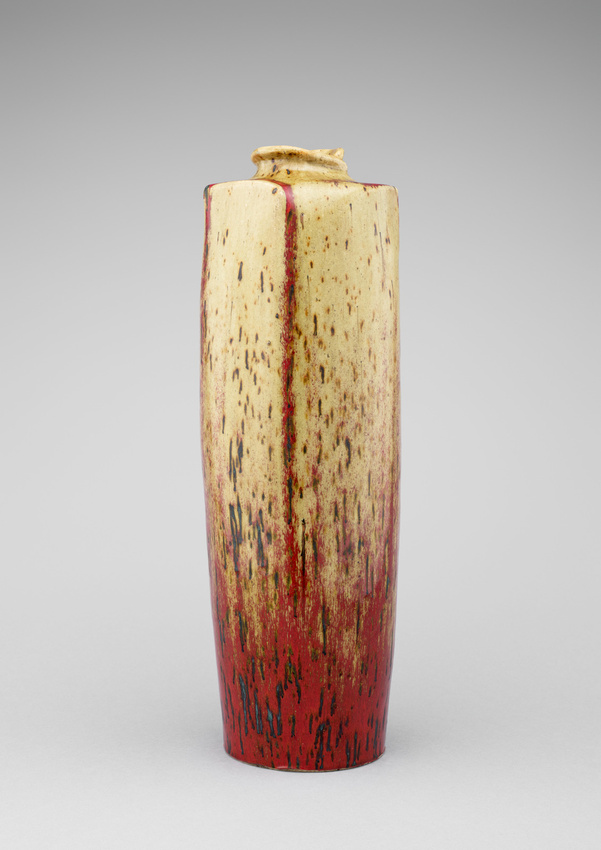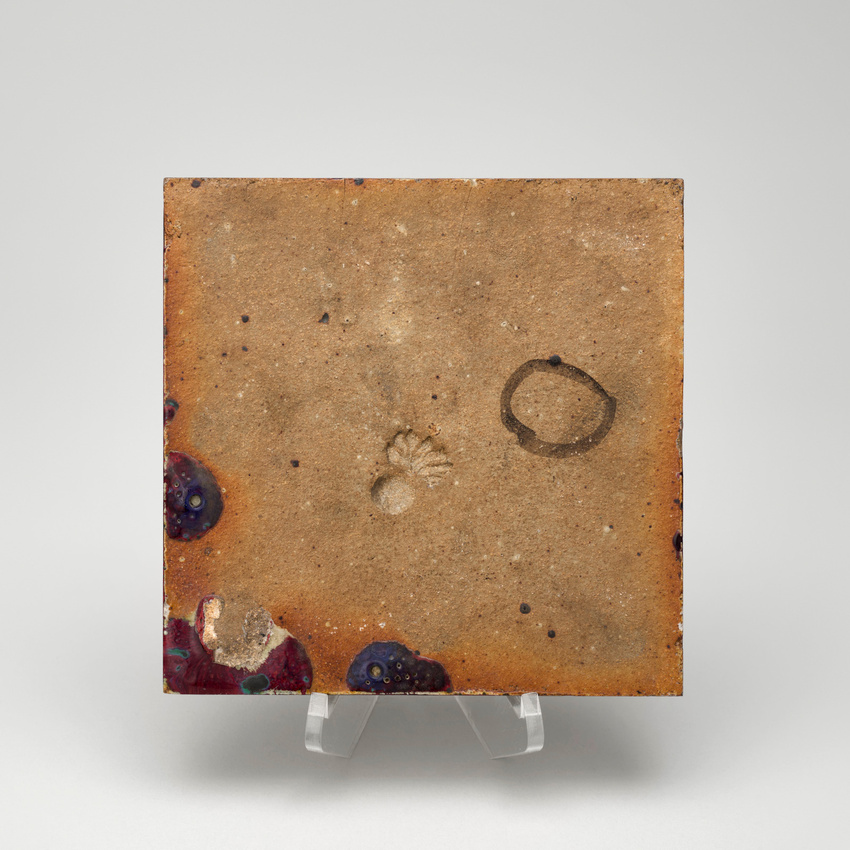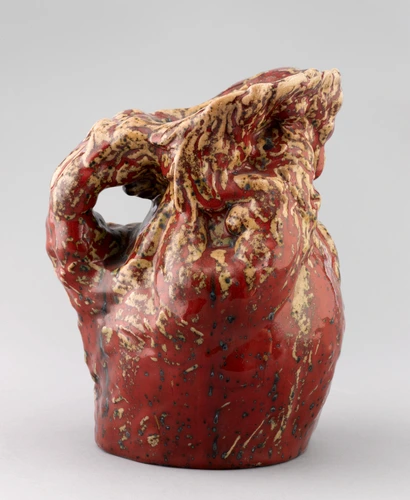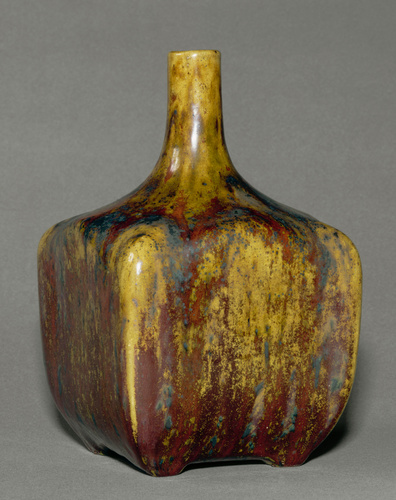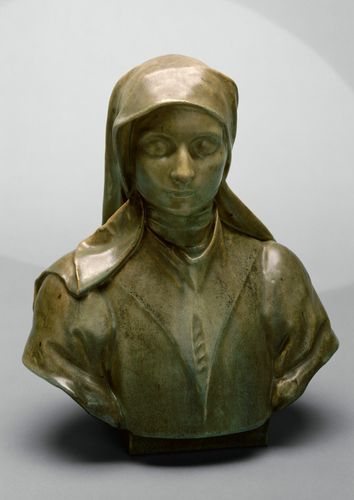Cheminée
Interest in monumental mantelpieces, whether functional or simply decorative, was curiously strong in the late 19th century. At the Salon de la Société Nationale des Beaux-Arts of 1894 alone there were half a dozen. They were made by sculptors (Jean Baffier or the Finnish artist Ville Vallgren), architects (Léon Bénouville) or ceramists such as this one by Dalpayrat. Bought by the state for the Musée du Luxembourg, it was made by Pierre-Adrien Dalpayrat and his partner Adèle Lesbros who, since 1893, had been financially supporting the artist's expensive experiments.
For Dalpayrat, designing a mantelpiece was above all an opportunity to apply to architectural ceramics the techniques which had built his reputation. Flamed stoneware, to start with, but more particularly the famous coppery red that all ceramists of the second half the 19th century tried to master in their efforts to reproduce the mythical sang-de-boeuf glaze of the Chinese. The oxblood glaze had been known in France since Alexandre Brogniart, the director of the Sèvres porcelain factory, had arranged for a missionary, Father Ly, to send him samples of different reds in 1844.
In fact, Dalpayrat's red is more a material than a colour. The basic colour is usually blood red, obtained from copper oxide, but can also be a moss green, amber or leaden grey, or all those at once. The diversity of the palette suggests the use of many specific oxides generating a particular colour. But this is not the case: the colours, flamed or otherwise, result from subtle variations in the proportions and the firing of the formula based on copper alone.

